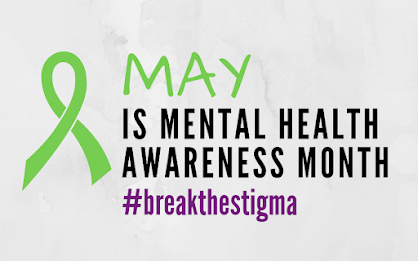PTSD AWARENESS MONTH Week No. 2 (6.12.23)
PTSD RISK FACTORS & TREATMENTS
Genetic Factors
Research continues to explore the role
of genetics in the development of PTSD. There have been studies showing genetic
influence on the development of mental health conditions such as schizophrenia,
bipolar disorder, and major depressive disorder, and researchers are finding
genetic influence in the development of PTSD as well.
Societal Factors
Social support, or lack
of, is a critical risk factor. Those who are limited in options for social
support can be at greater risk for PTSD. After the traumatic event, the need
for safe support resources is essential to help individuals process their
experience in a healthy way and to regain hope through secure and safe
emotional connections.
Biological and Neurological Factors
Two risk factors that
have been shown to possibly influence the development of PTSD after trauma are
IQ and neuroticism. Those who tend to score lower on IQ tests have been shown
to be more susceptible to developing PTSD.
In addition, people who
have greater neuroticism have
shown to be more likely to have PTSD.7
Other Factors
Another risk factor in
the development of PTSD after a traumatic event is having experienced another
trauma in the past. The impact of trauma has been found to have a cumulative
effect. This means that a trauma survivor who did not previously show symptoms
of post-traumatic stress disorder could develop PTSD after subsequent trauma.
A history of struggling
with a mental health condition prior to the traumatic event can also be a risk
factor in the development of PTSD. It has been shown that existing mood
disorders, anxiety-related disorders, and conduct disorders can be influential
risk factors.
Life stressors are a risk factor as well. When people are
currently experiencing life stressors such as divorce, financial strain, work
stress, or for children who are experiencing emotional challenges at school or
home, the likelihood of developing PTSD can increase.
The nature of the
triggering event is something to consider as an influential factor. It has been
shown that the more intense the event, such as witnessing death or extreme
violence or having been injured during the traumatic event, can be a risk factor.
When someone has experienced physical pain as a result of their trauma, such as
with sexual abuse, the
risk of PTSD can be greater, since the physical pain is a reminder of the
traumatic event.
HOW IS PTSD TREATED?
Your provider will work with you to develop a care plan
that may include one or more of these treatment options. Treatments include
medications and psychotherapy, either alone or in combination.
Medication
Antidepressants: Drugs
that are used specifically for treating viral infections. These medications are
effective when taken within 48 hours after the symptoms appear.
Therapy
·
Cognitive behavior therapy: Changing the thought process.
·
Exposure therapy:
Re-living the traumatic incident.
·
Psychodynamic therapy:
Handling personal values and emotional conflicts.
·
Eye movement desensitization and reprocessing (EMDR): Changing the thought process based on a series of eye movements.
Self-care
·
Always talk to your provider before
starting anything.
·
Get timely help and treatment.
·
Follow your treatment plan without
fail.
·
Take your medications as prescribed at
the right time.
Specialist To
Consult
·
Psychologist: Specializes in
diagnosing and treating diseases of the brain, emotional disturbance, and
behavior problems.
·
Psychiatrist: Specializes in
the branch of medicine concerned with the diagnosis and treatment of mental
illness.





Comments
Post a Comment